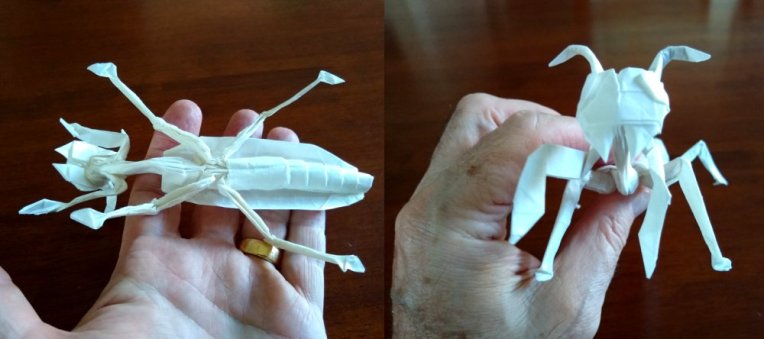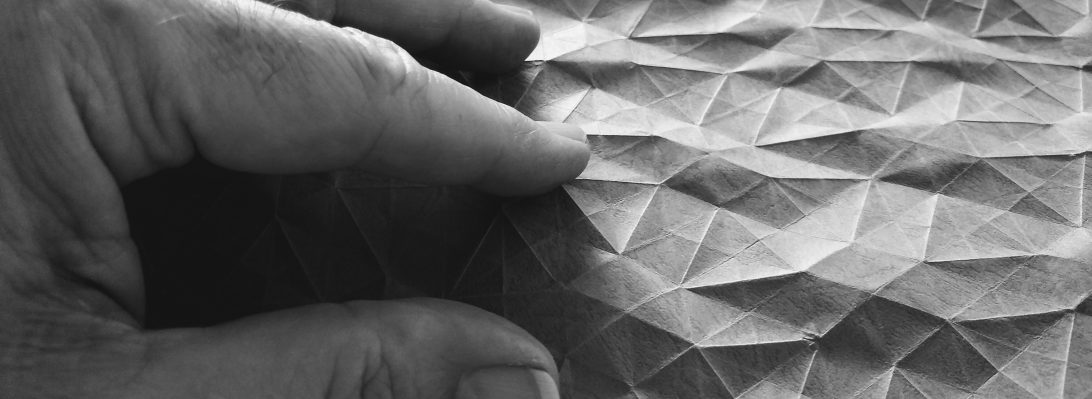Having just treated my first 2 bits of Wenzhou paper, I was itching to fold something (and running out of time to do so). I decided on a Praying Mantis, designed by Jo Nakashima model that I have not yet folded:

Based on a 40 grid, using fairly standard box-pleating tricks, this model is a lot of fun to fold. Jo helpfully provides diagrams that detail how to efficiently and accurately lay in the crease pattern (check it out here) and in doing so I learned a LOT about treated wenzhou: It is deliciously thin, crisp and really strong (it allowed me to bugger up a collapse 2 times before getting it right, without paper fatigue). One thing I did not expect was it’s relatively poor reversibility – ie. you fold in one direction and then turn it accurately inside out. I was expecting it to be easier to reverse.

Instead of “parachuting” (apparently a CP solve no no), I used the central axis and formed the head, thorax and as a consequence formed the front 2 pairs of legs. The abdomen collapse is fascinating and bends back under the wings making it really tidy all round.
Continue reading




























